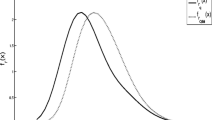Abstract
In order to estimate maximum steganographic capacity of discrete cosine transform (DCT) domain in JPEG image, this paper presents a method based on the maximize capacity under undetectable model (MCUU). We analyze the relation between steganographic capacity and affecting factors (image size, steganography operator, loading band, embedding intensity and image complexity). Then we design a steganography analyzer architecture and a steganographic algorithm which can dynamically increase the steganographic capacity. Compared with other methods of embedding capacity estimation in DCT domain, the proposed methods utilizes general steganalysis methods rather than one specific steganalysis technique and takes five essential factors into account, which improves the commonality and comprehensiveness of capacity estimation, respectively. The experimental results show that steganographic capacity for quantization index modulation (QIM) is almost twice that of spread spectrum (SS) based on MCUU model.
Similar content being viewed by others
References
Zheng P, Wang W, Zhao B, et al. Hiding information in MPEG sequences by using of B-Frames [J]. Wuhan University Journal of Natural Sciences, 2012, 3(3): 238–242.
Tang S, Jiang Y, Zhang L, et al. Audio steganography with AES for real-time covert voice over internet protocol communications [J]. Science China Information Sciences, 2014, 57(3): 1–14.
Sajedi H, Jamzad M. Secure steganography based on embedding capacity [J]. International Journal of Information Security, 2009, 8(6): 433–445.
Kodovsky J, Fridrich J, Holub V. Ensemble classifier for steganalysis of digital media [J]. IEEE Transactions on Information Forensics and Security, 2012, 7(2): 432–444.
Li S, Zhang X, Wang S. Study of digital image steganography method based on tolerable distortion range [J]. Journal of Image and Graphics, 2007, 12(2): 212–217(Ch).
Mao J F, Niu X X, Yang Y X, et al. JPEG2000 image maximum steganography payload based on MPUI model [J]. Journal of Software, 2014, 7: 1606–1620(Ch).
Rainer B, Christian K. A steganographic scheme for secure communications based on the chaos and the euler theorem [J]. IEEE Transactions on Multimedia, 2007, 9(6): 1325–1329.
Panyavaraporn J, Horkaew P, Wongtrairat W. QR Code watermarking algorithm based on wavelet transform [J]. IEEE International Symposium on Communications and Information Technologies, 2013, 13(3): 791–796.
Moulin P, O’Sullivan J A. Information-theoretic analysis of information hiding [J]. IEEE Transactions on Information Theory, 2003, 49(3): 564–593.
Somekeh-Baruch A, Merhav N. On the capacity game of public watermarking system [J]. IEEE Transactions on Information Theory, 2004, 50(3): 511–524.
Cohen A S, Lapidoth A. The capacity of the vector Gaussian watermarking Game [C] // Proceeding of International Symposium on Information Theory. Washington D C: IEEE Computer Society, 2001:5.
Cohen A, Lapidoth A. The Gaussian watermarking game [J]. IEEE Transactions on Information Theory, 2002, 48(6): 1639–1667.
Iyer R, Borse R, Chaudhuri S. Embedding capacity estimation of reversible watermarking schemes [J]. Sadhana-Academy Proceedings in Engineering Sciences, 2014, 39(6): 1357–1385.
Chen J Y, Zhu Y F, Zhang W M, et al. Extracting attack to DCT domain sequential LSB steganography [J]. Pattern Recognition and Artificial Intelligence, 2011, 24(4): 484–491(Ch).
Chen C, Shi Y Q, Chen W, et al. Statistical moments based universal steganalysis using JPEG-2D array and 2-D characteristic function [C] // Image Processing, 2006 IEEE International Conference on. Atlanta: IEEE Computer Society, 2006: 105–108.
Westfeld A. F5-A steganographic algorithm: High capacity despite better steganalysis [J]. Proceedings of Information Hiding Workshop, 2001, 21(37): 289–302.
Dong X Z, Zhang R, Niu X X. A steganalysis algorithm on MB steganography [J]. Journal of Beijing University of Posts and Telecommunications, 2012, 35(2): 99–103(Ch).
Lu J, Liu F, Luo X Y, et al. Recognition of PQ stego images based on identifiable statistical feature [J]. Journal on Communications, 2015, 36(3): 201–210.
Solanki K, Sarkar A, Manjunath B S. YASS: Yet another steganographic scheme that resists blind steganalysis [J]. Lecture Notes in Computer Science, 2007, 4567: 16–31.
Anitha M P T, Rajaram M. Overview of detecting stego-content in corporate emails: A Web-based steganalysis[J]. International Journal of Computer & Network Security, 2010, 2(9): 122–125.
Kodovsky J, Fridrich J. Quantitative structural steganalysis of Jsteg [J]. Information Forensics & Security IEEE Transactions, 2010, 5(4): 681–693.
Lie W N, Lin G S. A feature-based classification technique for blind image steganalysis [J]. IEEE Transactions on Multimedia, 2005, 7(6): 1007–1020.
Huang W, Zhao X F, Feng D G, et al. JPEG steganalysis based on feature fusion by principal component analysis[J]. Journal of Software, 2012, 23(7): 1869–1879(Ch).
Shi Y Q, Chen C, Chen W. A Markov process based approach to effective attacking JPEG steganography [C] //Proceedings of the 8th Information Hiding Workshop. Berlin: Springer-Verlag, 2007: 249–264.
Davidson J, Jalan J. Steganalysis using partially ordered Markov models [C] // Proceedings of the 12th Int’l Workshop on Information Hiding (IH 2010). Berlin: Springer-Verlag, 2010: 143–157.
Pevn T, Fridrich J. Merging markov and DCT features for multi-class JPEG steganalysis [C] // Proceedings of Society of Photo-Optical Instrumentation Engineers. San Jose: SPIE Proceedings, 2007, 6505(3): 28–40.
Fridrich J. Information Hiding [M. Berlin: Springer-Verlag, 2004.
Briassouli A, Tsakalides P, Stouraitis A. Hidden messages in heavy-tails: DCT-domain watermark detection using alphastable models [J]. IEEE Transactions on Multimedia, 2005, 7(4): 700–715.
Jamzad M, Yaghmaee F. Achieving higher stability in watermarking according to image complexity [J]. Scientia Iranica, 2006, 13(4): 404–412.
Author information
Authors and Affiliations
Corresponding author
Additional information
Foundation item: Supported by the National Natural Science Foundation of China (61170271, 61170272, 61272310, 61373131, 61573316), and Zhejiang Provincial Natural Science Foundation of China (LY15F020032, LQ12 F02016, LQ15E050006)
Biography: MAO Jiafa, male, Ph.D., Associate professor, research direction: information hiding, image processing, pattern recognition, computer vision, and video fingerprint.
Rights and permissions
About this article
Cite this article
Mao, J., Huang, Y., Niu, X. et al. A method to estimate the steganographic capacity in DCT domain based on MCUU model. Wuhan Univ. J. Nat. Sci. 21, 283–290 (2016). https://doi.org/10.1007/s11859-016-1172-7
Received:
Published:
Issue Date:
DOI: https://doi.org/10.1007/s11859-016-1172-7
Keywords
- maximize capacity under undetectable(MCUU) model
- steganographic capacity
- steganography
- steganalysis
- image complexity




